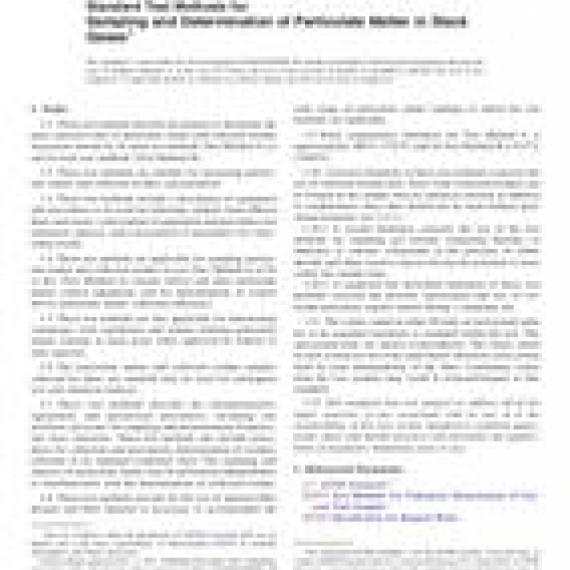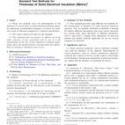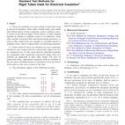No products
ASTM D3685/D3685M-13
ASTM D3685/D3685M-13 Standard Test Methods for Sampling and Determination of Particulate Matter in Stack Gases
standard by ASTM International, 11/01/2013
Full Description
1.1These test methods describe procedures to determine the mass emission rates of particulate matter and collected residue in gaseous streams by in-stack test methods (Test Method A) or out-of-stack test methods (Test Method B).
1.2These test methods are suitable for measuring particulate matter and collected residue concentrations.
1.3These test methods include a description of equipment and procedures to be used for obtaining samples from effluent ducts and stacks, a description of equipment and procedures for laboratory analysis, and a description of procedures for calculating results.
1.4These test methods are applicable for sampling particulate matter and collected residue in wet (Test Method A or B) or dry (Test Method A) streams before and after particulate matter control equipment, and for determination of control device particulate matter collection efficiency.
1.5These test methods are also applicable for determining compliance with regulations and statutes limiting particulate matter existing in stack gases when approved by federal or state agencies.
1.6The particulate matter and collected residue samples collected by these test methods may be used for subsequent size and chemical analysis.
1.7These test methods describe the instrumentation, equipment, and operational procedures, including site selection, necessary for sampling and determination of particulate mass emissions. These test methods also include procedures for collection and gravimetric determination of residues collected in an impinger-condenser train. The sampling and analysis of particulate matter may be performed independently or simultaneously with the determination of collected residue.
1.8These test methods provide for the use of optional filter designs and filter material as necessary to accommodate the wide range of particulate matter loadings to which the test methods are applicable.
1.9Stack temperatures limitation for Test Method A is approximately 400C (752F) and for Test Method B is 815C (1500F).
1.10A known limitation of these test methods concerns the use of collected residue data. Since some collected residues can be formed in the sample train by chemical reaction in addition to condensation, these data should not be used without prior characterization (see 4.4.1).
1.10.1A second limitation concerns the use of the test methods for sampling gas streams containing fluoride, or ammonia or calcium compounds in the presence of sulfur dioxide and other reactive species having the potential to react within the sample train.
1.10.2A suspected but unverified limitation of these test methods concerns the possible vaporization and loss of collected particulate organic matter during a sampling run.
1.11The values stated in either SI units or inch-pound units are to be regarded separately as standard within the text. The inch-pound units are shown in parentheses. The values stated in each system are not exact equivalents; therefore each system shall be used independently of the other. Combining values from the two systems may result in nonconformance to this standard.
1.12This standard does not purport to address all of the safety concerns, if any, associated with its use. It is the responsibility of the user of this standard to establish appropriate safety and health practices and determine the applicability of regulatory limitations prior to use.


































